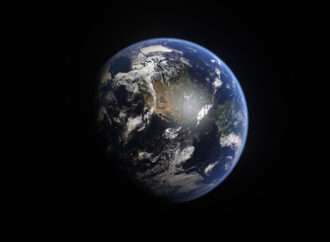The Earth, our home, is a remarkable and intricate planet that has fascinated scientists, explorers, and curious minds for centuries. From its vast oceans to towering mountains, our planet is a treasure trove of wonders and mysteries. In this article, we will delve into 15 mind-blowing facts about Earth, each shedding light on the remarkable
The Earth, our home, is a remarkable and intricate planet that has fascinated scientists, explorers, and curious minds for centuries. From its vast oceans to towering mountains, our planet is a treasure trove of wonders and mysteries. In this article, we will delve into 15 mind-blowing facts about Earth, each shedding light on the remarkable beauty and complexity of our world.
Let’s Explore Mind-blowing Facts about Earth
1. Earth Is Not Perfectly Round
Contrary to what we may imagine, Earth is not a perfect sphere. It’s an oblate spheroid, meaning it’s slightly flattened at the poles and bulging at the equator. This is due to the planet’s rotation. It causes a centrifugal force that pushes material away from the axis of rotation. As a result, Earth is approximately 0.3% wider at the equator than it is from pole to pole.
2. Earth’s Oldest Rocks Are Over 4 Billion Years Old
Some of the oldest rocks on our planet, found in Western Greenland, have been dated to be over 4 billion years old. Studying these ancient rocks provides valuable insights into the early history of our planet and the conditions that existed during its formation.
3. Earth’s Atmosphere Extends Far Beyond the Surface
Our planet’s atmosphere doesn’t abruptly end at the edge of space; it gradually thins out as you move higher. However, it’s challenging to pinpoint the exact boundary between Earth’s atmosphere and outer space. It depends on the criteria used. The Kármán line, located around 100 kilometers (62 miles) above sea level, is often considered the edge of space for practical purposes.
4. Earth Has More Water Than Land
Despite the breathtaking diversity of landscapes on Earth, the planet is predominantly covered by water. Approximately 71% of the Earth’s surface is covered by oceans, while the remaining 29% consists of land. The vastness of our oceans not only influences our climate but also supports a wide array of ecosystems.
5. Earth’s Magnetic Field Protects Us
The Earth’s magnetic field plays a crucial role in protecting our planet from the harmful effects of solar wind and cosmic radiation. This shield, generated by the movement of molten iron in the planet’s outer core, prevents the solar wind from stripping away our atmosphere and also deflects charged particles. Without this magnetic field, Earth’s surface would be inhospitable to life as we know it.

6. Earth’s Tectonic Plates Are Always on the Move
The Earth’s crust is divided into several large and numerous smaller tectonic plates that constantly move. This movement is responsible for earthquakes, volcanic activity, and the creation of mountain ranges. The theory of plate tectonics, proposed by Alfred Wegener in the early 20th century, revolutionized our understanding of Earth’s geology.
7. Earth Experiences Tidal Forces from the Moon
The gravitational relationship between the Earth and the Moon results in one of the most noticeable and fascinating natural phenomena on our planet—tides. Tidal forces generated by the Moon’s gravitational pull affect Earth’s oceans and give rise to the rise and fall of sea levels known as tides. This is a remarkable interplay of celestial forces that has intrigued scientists, sailors, and beachgoers for centuries.
8. Earth’s Deep Oceans Are Mysterious and Unexplored
While we have mapped the surface of the Moon and Mars in great detail, much of our own planet’s deep oceans remain uncharted. The deep-sea is home to astonishing creatures and hydrothermal vents . It offers valuable insights into extremophiles and the potential for life on other planets. The enigmatic life forms, geological mysteries, and technological challenges associated with deep-sea exploration captivate the imaginations of scientists and adventurers alike. As we continue to unveil the secrets of these hidden worlds, we gain not only a deeper understanding of Earth’s history and life’s remarkable adaptability but also potential insights into the search for life beyond our planet. The deep oceans are a testament to the boundless curiosity of humanity.
9. Earth’s Atmosphere Contains Trillions of Tons of Air
The Earth’s atmosphere contains trillions of tons of air, with an estimated mass of approximately 5.15 billion billion tons. This enormous volume of gases is not only vital for human and terrestrial life but also plays a pivotal role in regulating climate, weather, and shielding our planet from harmful solar radiation. Understanding the magnitude of Earth’s atmosphere highlights the importance of maintaining its composition and balance to ensure a habitable and sustainable environment for future generations. In total, the Earth’s atmosphere contains trillions of tons of air. These gases are essential for life, climate regulation, and weather patterns.
10. The Highest and Lowest Points on Earth Are Extreme
Mount Everest, the world’s tallest mountain, reaches an astounding height of 29,032 feet (8,849 meters) above sea level. On the other end of the spectrum, the Challenger Deep in the Mariana Trench is the deepest point on Earth’s surface, plunging to a depth of about 36,070 feet (10,994 meters). These extremes in topography highlight Earth’s remarkable geological diversity.

11. Earth’s Climate Is Continuously Changing
Earth’s climate has experienced significant changes throughout its history, including ice ages, warm periods, and shifts in sea levels. Human activities, such as the burning of fossil fuels and deforestation, are currently contributing to rapid climate change. Understanding the Earth’s climate history is crucial for addressing the challenges of climate change and its potential consequences.
12. Earth Is Home to Countless Species
Our planet teems with life, with an estimated 8.7 million species of plants, animals, and microorganisms. However, the vast majority of these species remain undiscovered and undocumented. Biodiversity is essential for ecosystem stability and resilience. It makes conservation efforts critical to preserving the incredible array of life on Earth.
13. Earth’s History Can Be Read in Its Rocks
Geologists study the Earth’s history by examining its rock layers, known as stratigraphy. These layers contain a wealth of information about past climates, environments, and the evolution of life on our planet. By analyzing fossils, sedimentary rocks, and volcanic deposits, scientists have reconstructed Earth’s history over millions of years.
14. Earth’s Unique Moon
Earth’s Moon is the fifth-largest natural satellite in the solar system and has a unique relationship with our planet. The Moon’s gravitational pull influences Earth’s tides and even slows down our planet’s rotation. The Moon’s presence has also played a crucial role in stabilizing Earth’s axial tilt, which in turn influences our climate.
15. Earth Is Not the Only Habitable Planet
While Earth is the only planet to support life, scientists have discovered thousands of exoplanets in our galaxy. Some of these exoplanets are located in the habitable zone, a region around their parent stars where conditions might be suitable for liquid water and, potentially, life. The search for extraterrestrial life continues to be an exciting frontier in astronomy and planetary science.
Conclusion
The Earth is a remarkable and dynamic planet, filled with awe-inspiring wonders that never cease to amaze. From its geological forces to its diverse ecosystems, our world is a testament to the beauty and complexity of the natural world. As we continue to explore and study Earth, we gain a deeper understanding of our home and the unique place it occupies in the cosmos. These 15 mind-blowing facts about Earth are just a glimpse of the incredible story of our planet. They inspire us to continue our quest for knowledge and stewardship of this precious world.




























Leave a Comment
Your email address will not be published. Required fields are marked with *